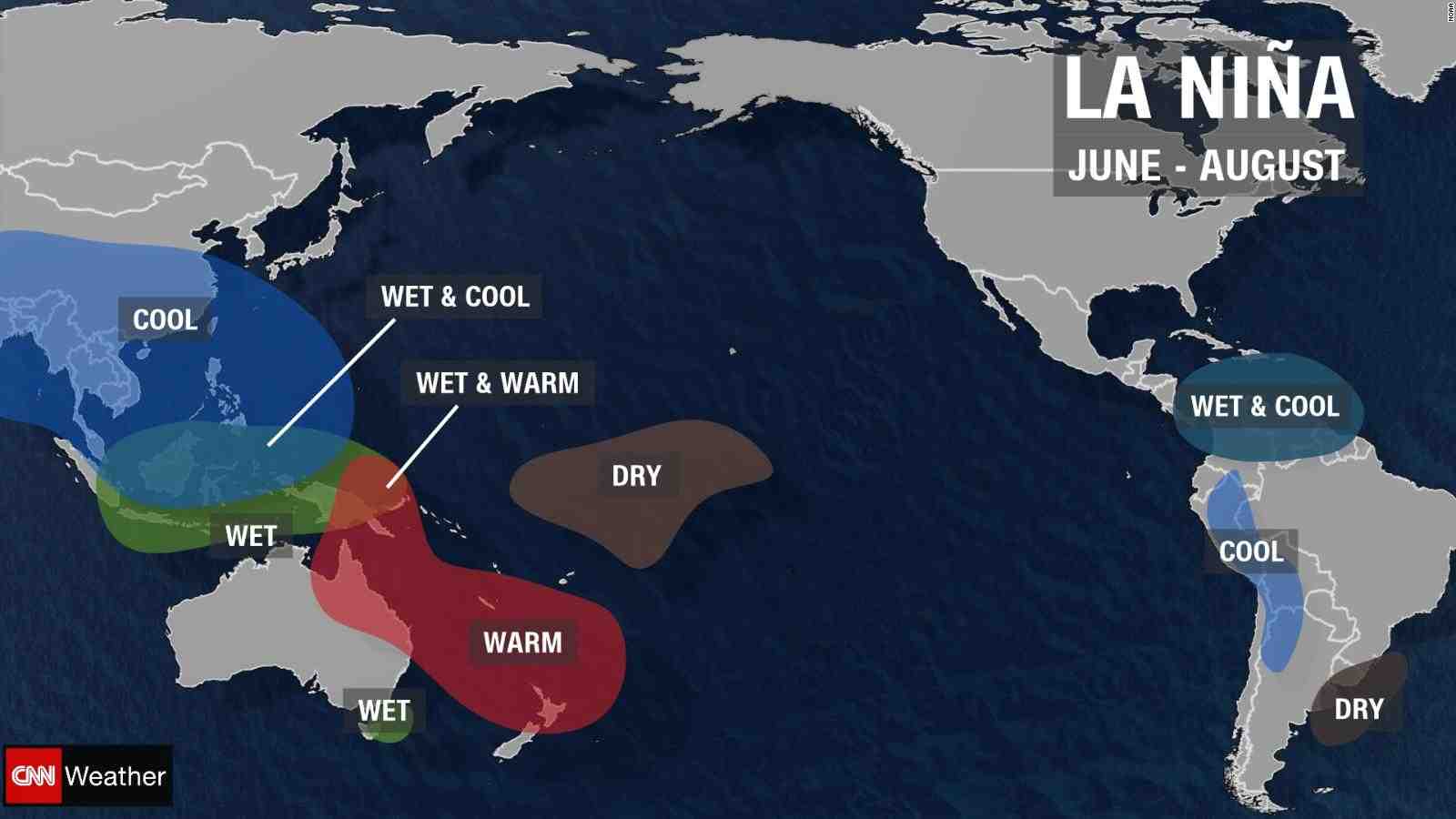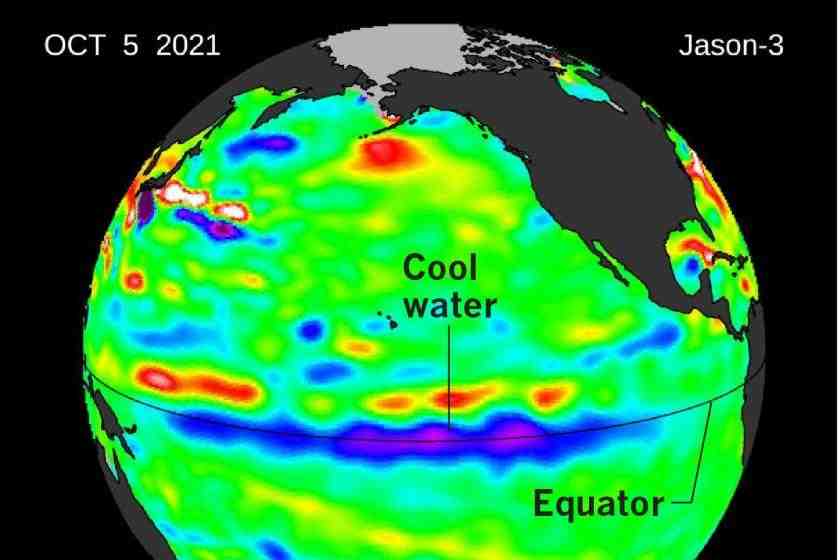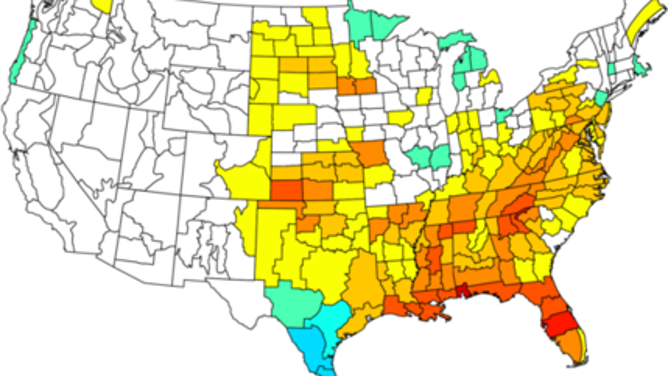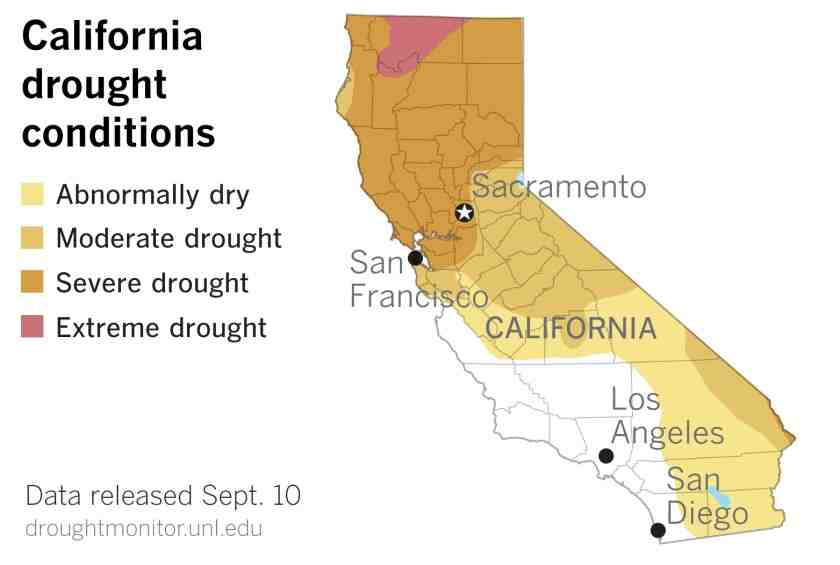While the lingering La Niña weather pattern is expected to bring soggy storms and severe hurricanes to parts of the United States, it’s a different story here in California.
La Niña is expected to stay through the end of the year, according to the latest outlook from the National Weather Service’s Climate Prediction Center. Although La Niña – and its opposite, El Niño – are characterized by the temperature of the Pacific Ocean, they have major impacts on the weather patterns we experience on earth.
Before we can understand how this will affect our summer, it is important to note that it has already impacted our winter. La Niña generally brings drier conditions to the southern half of the country and wetter conditions to the northern half, but the position of this dividing line varies from year to year.
Sometimes La Niña bisects California, bringing lots of rain to Northern California and drought to Southern California. This year, however, the dividing line was further north. While parts of Washington and Oregon are drought-proof, a dry La Niña winter and spring left 99.8% of California with drought conditions.
It is now summer, California’s driest season, and drought conditions are only expected to get worse. NOAA predicts a warmer-than-average summer for the entire state, which will further deplete reservoirs and further dry out already parched land.
The NOAA Summer Outlook predicts average precipitation for California this summer. But “average precipitation” means no precipitation for most parts of the state. Average rainfall in Los Angeles in July is a negligible 0.02 inches, according to the Los Angeles Almanac, and zero inches in August. Fresno, Bakersfield, Sacramento and San Diego typically receive less than 0.1 inches of rain in July. The average July in San Francisco does not rain at all.
As of this week, about 12% of the state is in the worst drought category – “exceptional drought” – and that number is expected to rise through the summer.
Worsening drought means more fuel during peak wildfire season and could mean more water restrictions.
There is a chance that the La Niña pattern we currently find ourselves in could shift to an “ENSO neutral” pattern at the end of the summer. This means that we would neither be in a La Niña nor El Niño pattern. The Climate Prediction Center will update its outlook in mid-July.
Does La Niña mean more rain for California?

Most people think that La Niña means below average rain and snowfall for California. It’s not always the case; in fact, some La Niña patterns are associated with average or above-average rainfall in parts of California.
Does El Niño mean more rain in California? Recall on the global effects page that during an El Niño, sea surface temperatures in the equatorial Pacific cause changes in the atmosphere above it, causing the current to expand -jet at upper levels (10 km upwards). This change, on average, tends to bring more storms to the California coast.
Does it rain more during La Niña?
Rain clouds normally form over warm ocean water. La Niña blows all this warm water towards the Western Pacific. That means places like Indonesia and Australia can get a lot more rain than usual. However, the cold water in the eastern Pacific causes fewer rain clouds to form.
Where does it rain during La Niña?
During a La Nina event, temperature changes in the Pacific Ocean affect tropical precipitation patterns from Indonesia to the west coast of South America. These changes in tropical precipitation patterns affect weather patterns around the world.
Does La Niña bring wet weather?
The World Meteorological Organization predicts that La Niña will bring cooler and wetter weather to Australia. California, Europe and South America will experience much warmer and drier weather.
What La Niña means for California’s drought?
But they have major impacts on the weather patterns we experience on earth. La Niña generally brings drier conditions to the southern half of the country and more rainfall to pockets of the northern half. Drought conditions often worsen, and that seems to be the case for most of the West this summer.
Is 2022 a wet year in California?
2022 is California’s driest year on record – an ominous sign for summer and fall.
Does La Niña bring severe drought?
This weather increases the risk of wildfires in Florida and drought on the North American plains. The Great Dust Bowl drought of the 1930s is thought to have been caused by a decade of La Niña-like conditions and was likely responsible, in part, for the severe drought in the American Midwest in 1988.
How does El Niño and La Niña affect California?
California’s seasonal climate is influenced by El Niño and La Niña – temporary weather conditions that, depending on their severity, contribute to making the weather wetter or drier than normal. El Niño and La Niña episodes typically last nine to 12 months, but some events can last for years.
What types of conditions is El Niño responsible for in California?
Major El Niño events – such as 1972-73, 1982-83, 1997-98 and 2015-16 – have caused some of the great floods, droughts, wildfires and coral bleaching of the past half-century. El Niño years tend to be warmer than other years.
How La Niña and El Niño affect the community?
El Niño and La Niña affect not only the temperature of the oceans, but also the amount of rain on land. Depending on which cycle occurs (and when), this can mean either droughts or floods. Generally, El Niño and its warm waters are associated with drought, while La Niña is linked to increased flooding.
Does La Niña mean more rain?

Rain clouds normally form over warm ocean water. La Niña blows all this warm water towards the Western Pacific. That means places like Indonesia and Australia can get a lot more rain than usual. However, the cold water in the eastern Pacific causes fewer rain clouds to form.
How does El Niño and La Niña affect California?

California’s seasonal climate is influenced by El Niño and La Niña – temporary weather conditions that, depending on their severity, contribute to making the weather wetter or drier than normal. El Niño and La Niña episodes typically last nine to 12 months, but some events can last for years.
What is El Niño and how does it affect California? The path of El Niño storms affects the location of jet streams. Instead of landing in the Pacific Northwest, the southern jet stream hits California with increased precipitation that is usually accompanied by flooding, landslides and coastal erosion. El Niño tends to strengthen atmospheric rivers.
How does El Niño affect climate in California?
In general, the effect of El Niño on California is increased precipitation accompanied by flooding, landslides, and coastal erosion. Effects are variable across the state and are most predictable in Southern California. Reduced upwelling of cold, nutrient-rich water on which phytoplankton depend.
Does El Niño mean more rain for California?
With the exception of the strongly positive precipitation anomaly in Southern California during a strong El Niño, the presence of El Niño or La Niña is not a guarantee of a significantly wet or dry year in California. .
What is El Niño and what effect does it have on California’s climate?
During an El Niño winter, the warming of the ocean at the equator triggers a chain reaction that affects the atmospheric circulation at the equator, altering the jet stream, strengthening it and extending it towards the California coast. . This causes more storms than normal as it approaches the California coast.
What types of conditions is El Niño responsible for in California?
Major El Niño events – such as 1972-73, 1982-83, 1997-98 and 2015-16 – have caused some of the great floods, droughts, wildfires and coral bleaching of the past half-century. El Niño years tend to be warmer than other years.
What does El Niño mean to people in California?
An El Niño event is marked by warm waters in the equatorial Pacific. The effects of El Niño are often felt in California as they alter the atmosphere and ocean, including increased precipitation and warmer temperatures.
What conditions does El Niño cause?
El Niño causes the Pacific jet stream to move south and spread further east. In winter, this results in wetter than usual conditions in the southern United States and warmer, drier conditions in the north. El Niño is also having a significant effect on marine life off the Pacific coast.
How La Niña and El Niño affect the community?
El Niño and La Niña affect not only the temperature of the oceans, but also the amount of rain on land. Depending on which cycle occurs (and when), this can mean either droughts or floods. Generally, El Niño and its warm waters are associated with drought, while La Niña is linked to increased flooding.
How does La Niña affect people’s lives?
La Niña causes the jet stream to move north and weaken over the eastern Pacific. During La Niña winters, the South experiences warmer and drier conditions than usual. The North and Canada tend to be wetter and colder. During La Niña, the waters off the Pacific coast are colder and contain more nutrients than usual.
What are the effects of El Nino and La Nina in the Philippines?
ENSO affects agricultural production because it disrupts normal weather conditions. Specifically, El Niño creates water shortages and La Niña creates an abundance of water, including flooding. Water shortages reduce crop planting areas, delay planting seasons, and generally decrease crop yields.
Is 2022 going to be a wet year in California?

This year is already wetter than last year’s 2021 total and is as wet as the rainfall total for 2020, the first year of this drought. Reservoirs are filling up, but many remain far from full.
Will summer 2022 be hot? The summer of 2022 is expected to be warmer than average across much of the United States, according to an updated outlook from The Weather Company, an IBM company, and Atmospheric G2.
What is the coldest month in Miami?
The coldest month of the year in Miami is January, with an average low temperature of 18°C and a high of 24°C.
What month is the hottest in Miami?
July is the hottest month in Miami with an average temperature of 28°C (82°F) and the coldest is January at 20°C (68°F) with the most daily sunshine hours at 12 in July .
What months are winter in Miami?
| Month | Celsius (°C) | Fahrenheit (°F) |
|---|---|---|
| September | 29.5 | 85 |
| October | 28 | 83 |
| November | 26 | 79 |
| December | 25 | 77 |
What is the coldest month in Chicago?
On average, January is Chicago’s coldest month, but it’s not necessarily the coldest month in any given winter. Long-term temperature averages at Midway Airport (1929-2011) rank January as the city’s coldest month at 23.9 degrees followed by February at 27.9 degrees and December at 28.9.
How many months is cold in Chicago?
The cold season lasts for 3.2 months, from December 2 to March 9, with an average daily high temperature below 7°C. The coldest month of the year in Chicago is January, with an average low of 22°F and a high of 33°F.
What is the coldest its ever been in Chicago?
The coldest temperature recorded in Chicago was on January 20, 1985, at minus 27 degrees. Many of the other lowest temperatures recorded in the city came from arctic breaks in 1872 and 1899. The record number of days with sub-zero temperature was in 1912 with 10.
What is the coldest month in Orlando Florida?
The hottest month of the year in Orlando is July, with an average high of 90°F and a low of 75°F. The cool season lasts for 2.7 months, from December 4 to February 25, with an average daily high temperature below 24°C. The coldest month of the year in Orlando is January, with an average low of 52°F and high of 21°F.
Is July or August hotter in Orlando?
For Orlando, the two hottest months are July, with an average normal temperature of 82.7, and August, with an average temperature of 82.8. This year, the average June temperature was 81.8, July 82.3, August 82.8 and September 83.4 – 2.3 degrees above normal.
Is November a good time to go to Orlando?
Orlando’s weather in November is much more bearable than during the humid summer months. It’s also low season in Orlando, so a quieter time at theme parks and resorts. The combination of good weather and fewer crowds makes November one of the best times to visit Orlando for a relaxing off-season getaway.
Sources :

